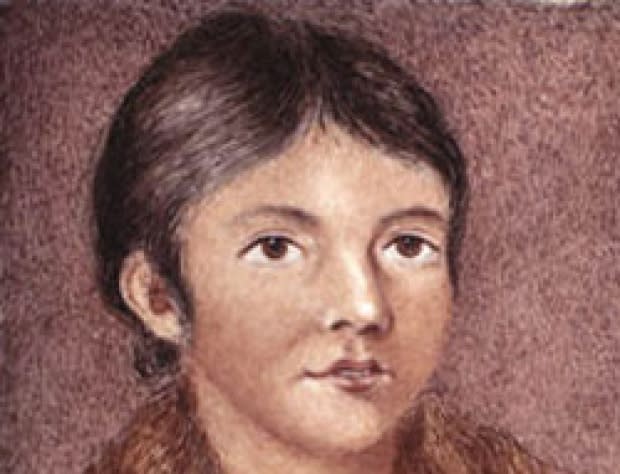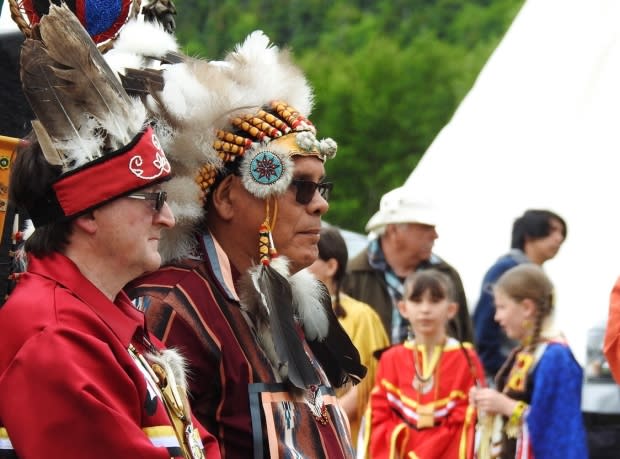Cultural appropriation or scientific necessity? The dilemma of repatriating remains
The lives of Nonosabasut and Demasduit — two of the last Beothuk who were kidnapped, murdered, buried, and then exhumed for eventual display in a European museum — ended in tragedy, but two centuries later, the return of their remains to Newfoundland soil has been a source of solemn triumph for supporters of their repatriation.
Others, however, might argue that victory is a hollow one.
The National Museum of Scotland announced Tuesday that it would honour a request by Canadian and Indigenous officials to send the Beothuk remains home, suggesting a final chapter for the married couple, who were taken from their graves by a Newfoundland explorer and sent to Edinburgh in the 1800s.
That ending, said Daryl Pullman, a medical ethics professor at Memorial University, is becoming increasingly commonplace. In recent years, Pullman said, he's seen a push to send cultural artifacts back to their rightful homes.
"It's really the ethics of cultural appropriation: Taking artifacts, things that are very important to other people's cultures, and putting them in our museums so we can look at them," Pullman said.
"There's a lot of work going on generally about repatriating these artifacts back to their original home."
'Common human history'
But some archeologists push back against the repatriation trend, arguing that if all remains are laid to rest, humanity could lose a great deal of potential knowledge, he added.
"There's a lot to be learned by studying these remains," he said. "By doing DNA testing we can learn a great deal about where the Beothuk might have come from."

The skeletal remnants of Nonosabasut and Demasduit are two of about two dozen sets of Beothuk remains, with some in the Canadian Museum of History in Gatineau, Que., and the rest stored at Queen's College at Memorial University.
Despite the years these remains have spent in science's care, there's very little known about Beothuk connections to other populations, he said.
"They're a bit of a mystery even to this day. How did they end up on this island? What was their relationship to other peoples? Did they come across the Bering land bridge?" asked Pullman, adding that there's even speculation about a Beothuk connection to Vikings in Iceland.
"Some say it would be unethical for us to just repatriate all of these remains and lose them [for] science forever.… These are dealing with questions germane to, not just native populations, but to all of us.
"It's part of our common human history."
Spiritual connection
Chief Mi'sel Joe of Miawpukek First Nation in Conne River, who led the Beothuk repatriation campaign, said despite their age, the remains should be treated just like any other human body.
"I want them not to come in a cardboard box, or some wooden crate, but to have something made specially from this community from some handy craftsman," he said, adding that an Indigenous honour guard should also be present to greet the ancestors' return to Canadian soil.
Eventually, he said, a site in Newfoundland should be selected as a final resting place, and "maybe some kind of monument put up," he said. "You don't want to leave them out … and have them disappear."
Joe said he's relieved the practice of displaying Indigenous remains is petering out.
"They're human remains. The dignity and spiritual connection of those people, being put on display — it's just not [morally right]," he said.
"Just because they're Aboriginal people, it's seen as OK to do that."

Some Indigenous leaders, Joe included, aren't opposed to forensic research on remains such as those of the Beothuk.
And Pullman said it's possible to "do research in a respectful way, where we can all agree this is appropriate," such as actively involving Indigenous communities.
Joe described a visit to the room containing Beothuk remains at Queen's College, recalling that he asked archivists to install something red alongside the bodies — a sacred colour to the Beothuk.
Joe said he was told the room had been draped in red cloth to honour his request.
"It felt like going to visit relatives, to say goodbye," Joe said. "But in this case these people are long gone, and in some cases they have been brutally murdered, like the ones in Scotland.
"It leaves you with a different feeling, coming away from that ... very emotional, very spiritual. It [brings] you down to earth to realize this happened so long ago, and here I am, all those years later."
Read more from CBC Newfoundland and Labrador

